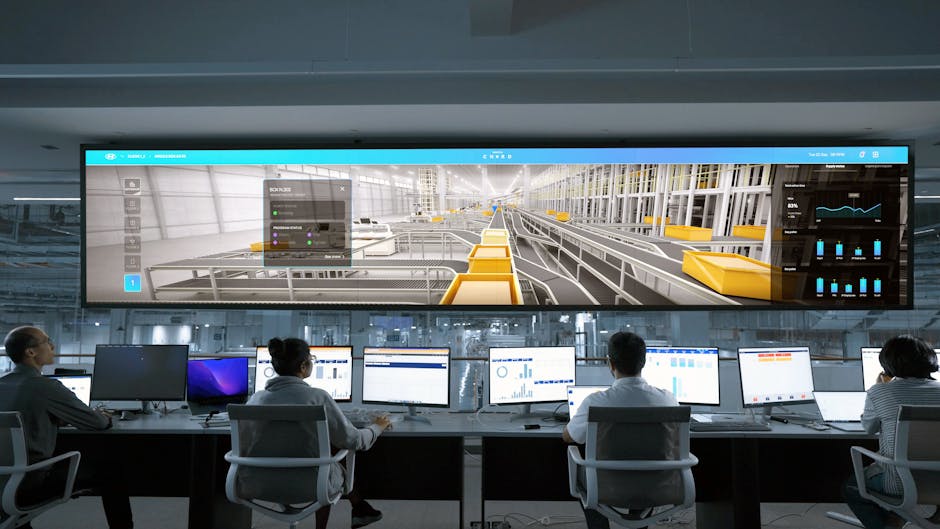How to Troubleshoot Internet Connectivity Issues in Your Office Network in UAE
- Internet & Connectivity, IT Infrastructure & Networking, Network
In today’s fast-paced digital landscape, reliable internet connectivity is crucial for business operations. When a network issue arises, productivity can come to a halt, causing frustration for your team and potentially affecting your bottom line. Whether you have an in-house IT team or rely on an outsourced provider, knowing the basic steps to troubleshoot internet connectivity problems can help mitigate downtime.
Here’s a simple, step-by-step guide to help you troubleshoot common internet connectivity issues within your business network.
1. Check the Physical Connections
Before diving into more advanced troubleshooting, start by checking the basics. It’s not uncommon for something as simple as a loose cable or unplugged device to cause internet issues.
- Ethernet Cable: If you’re using a wired connection, make sure that the Ethernet cable is securely plugged into the computer and router or switch.
- Power Cables: Verify that all networking equipment, such as routers, modems, and switches, are powered on and connected to the power source correctly.
2. Verify the Wi-Fi Connection
If you’re using Wi-Fi, the problem may stem from a weak signal or interference. Here’s how to check:
- Signal Strength: Ensure you’re within range of your wireless router or access point. Move closer to it if the signal is weak.
- Interference: Check for potential interference from other wireless devices (like cordless phones or microwaves) or too many devices on the same frequency band.
3. Run a Basic Diagnostic Test
Your computer can help you diagnose connectivity issues:
- Windows: Right-click the network icon in the system tray and select “Troubleshoot problems.” Follow the prompts for Windows to detect and potentially resolve the issue.
- Mac: Click on the Wi-Fi icon, select “Network Preferences,” and then run diagnostics.
4. Check Your IP Address and Network Settings
If rebooting doesn’t help, there might be an issue with your network settings or IP configuration.
- Renew IP Address: Go to the Command Prompt (Windows) or Terminal (Mac) and type
ipconfig /releasefollowed byipconfig /renew(Windows) orsudo ifconfig en0 down && sudo ifconfig en0 up(Mac). This will request a new IP address from your network. - Check DHCP: Ensure that your devices are set to automatically obtain an IP address through DHCP, rather than using a static IP that may conflict with others on the network.
5. Test Connectivity with Another Device
To identify whether the problem is with a specific device or the entire network:
- Try a Different Device: Connect another device to the network. If the second device connects successfully, the issue is isolated to the original device.
- Different Connection Types: If Wi-Fi isn’t working, try connecting via Ethernet (if possible). This can help identify whether the problem is with the Wi-Fi network itself or the overall internet connection.
6. Check for DNS Issues
Domain Name System (DNS) problems can prevent you from accessing certain websites, even if your internet connection is working.
- Change DNS Servers: Try switching to a public DNS server like Google’s (8.8.8.8) or Cloudflare’s (1.1.1.1) to see if that resolves the issue.
- Flush DNS Cache: Use the command
ipconfig /flushdnsin Windows orsudo killall -HUP mDNSResponderin Mac’s Terminal to clear the DNS cache.
7. Reboot Networking Equipment
Restarting your devices often resolves temporary glitches or software issues.
- Modem & Router: Unplug your modem and router from the power source, wait 30 seconds, and plug them back in.
- Switches & Access Points: If your network uses additional equipment, such as switches or wireless access points, restart these devices as well.
8. Check for ONT (Optical Network Terminal) Issues
In the UAE, internet is mostly provided using a Fiber Optic Infrastructure with an ONT box installed in your office. An Optical Network Terminal (ONT) serves as the bridge between your fiber optic network (Etisalat or DU) and your internal network infrastructure.
- Check the ONT Lights:
- Power Light: Should be solid. If it’s off, check the power supply.
- PON/Optical Light: A solid green light means a stable connection; a flashing or absent light indicates a problem with the fiber network.
- LOS (Loss of Signal) Light: A red LOS light indicates no signal from the service provider.
- LAN Light: If it’s off, there’s likely an issue with the Ethernet cable or the router.
9. Power Cycle the ONT
- Unplug the Power: Disconnect the ONT from the power outlet.
- Wait 1-2 Minutes: Allow the ONT to fully power down.
- Plug It Back In: Reconnect the power and wait for all lights to stabilize.
10. Test with a Direct Connection
- Direct Connection: Connect a computer directly to the ONT using an Ethernet cable.
- Test Internet: If the connection works, the problem might be with your router or network setup.
11. Check for ISP Outages
If your troubleshooting steps aren’t resolving the issue, it could be due to a larger outage with your Internet Service Provider (ISP).
- Contact Your ISP: Check if they’re experiencing widespread outages in your area. Use a mobile hotspot temporarily if needed.
12. Inspect Your Firewall and Security Settings
- Check Firewall Rules: Ensure that firewall settings aren’t inadvertently blocking network traffic.
- Antivirus Software: Temporarily disable antivirus or VPN settings to see if they are affecting connectivity.
13. Update or Reset Your Router/Firewall
- Firmware Updates: Check the manufacturer’s website for the latest firmware updates for your modem or router.
- Factory Reset: As a last resort, perform a factory reset on your modem or router (ensure to back up any necessary settings beforehand).
When to Call in Professional Support
If you’ve gone through these steps and your internet issues persist, it may be time to consult your network team or service provider like Digital Workspaces for further troubleshooting. Some issues may be due to more complex problems like hardware failure or ISP-related issues.
Conclusion
Basic network troubleshooting can often resolve common internet connectivity problems, saving your business precious time and minimizing downtime. By systematically working through these steps, you can identify the root cause of the issue and get your network back up and running. However, when in doubt, don’t hesitate to reach out to us. We can help with more advanced network diagnostics and repairs.



